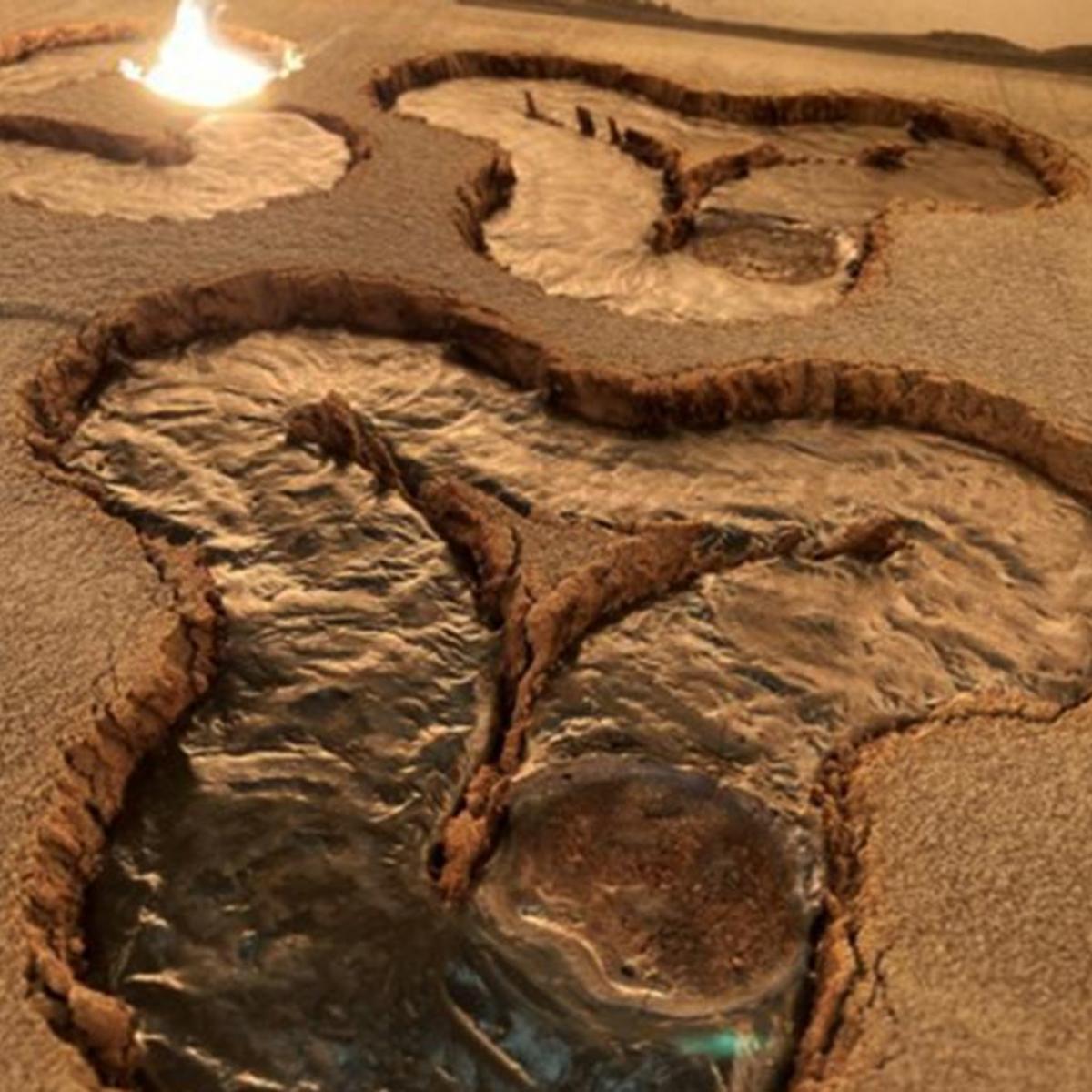Additive manufacturing: 3D Printing Turns Moon Dust Into Roads
A joint study by the Federal Institute for Materials Research and Testing (BAM), Clausthal University of Technology and Aalen University, which was published in October 2023 in the prestigious journal Springer Nature Scientific Reports, reveals fascinating prospects: With the help of innovative 3D printing technology and lunar dust, the construction of roads and landing pads on the Earth's satellite could be within reach. This opens up unimagined possibilities for the construction of future lunar bases.
Lunar dust, when stirred up, poses a significant challenge to lunar missions: Due to the low gravity on Earth's satellite, it tends to float for long periods of time and can contaminate and damage machinery, devices and equipment. Permanent lunar bases therefore rely on fixed infrastructure, roads and landing pads to minimise the dust problem. At the same time, it would be extremely costly and time-consuming to transport conventional materials for road construction specifically from Earth to the Moon. It would be more advantageous to use resources already available there, such as lunar dust. It still needs to be clarified whether it can be processed into cobblestone-like elements using 3D printing.
Moon dust as a building material
This is where the current study comes in. The authors experimented with laser beams of different strengths and sizes (up to 100 mm diameter and 12 kilowatts of output power) to develop a robust building material from lunar dust. They used a fine-grained material (EAC-1A) which is officially qualified by the European Space Agency (ESA) as the equivalent of lunar dust.
The laser's large focal spots, up to 100 mm, allow the material to melt at high speed into solid structures covering large areas, which is essential for building roads and landing pads. During the tests, however, it turned out that when the laser tracks overlap, the enormous energy density leads to high temperature differences and stresses in the material and consequently to cracks.
The solution: The team developed triangular geometric shapes with an opening in the middle, where the laser tracks did not overlap during printing. The result: "paving stones" that interlock perfectly to create a solid surface.
Sunlight instead of lasers
On the moon, the laser, which at over 1 tonne would be too heavy to transport to the moon, would be replaced by a highly refractive lens of several square metres. It can focus the sunlight in such a way that it can replace the intensity of the laser. Such a film-based lens (Fresnel lens) weighing less than 10 kilograms could easily be transported to the moon.
"Our results show the great potential that additive manufacturing has," says Jens Günster, project coordinator and head of the Department of Multimaterial Manufacturing Processes at BAM. "They bring us a significant step closer to building a reliable infrastructure on the moon as planned by the European Space Agency (ESA)."
The project was funded by ESA as part of the ESA Discovery Programme. In the future, further experiments on this are to be carried out with ESA and the German Aerospace Centre (DLR).
Additive Manufacturing Berlin Brandenburg - AMBER project
AMBER, short for Additive Manufacturing Berlin Brandenburg, focusses on the key technology of additive manufacturing. As a future cluster, AMBER focuses on three key areas: personalised medical technology, innovative materials and processes for additive manufacturing and the application of bio-based materials and additive manufacturing in space.
The mission is to connect partners from the capital region and regional networks. Based on outstanding research results in the field of additive manufacturing, AMBER is creating an inter- and transdisciplinary cluster that brings together research institutions and industry players. The vision is to establish an innovative ecosystem for additive manufacturing that will make the capital region a driving force for the rapid implementation of research results in innovative applications, the development of new business models, sustainable skills development and job creation.
AMBER focuses on creating a transparent ecosystem for additive manufacturing in the capital region, establishing a strong innovation network for entrepreneurs and business people and developing a platform that makes optimal use of existing competences and synergies while positioning itself as a regional umbrella brand.
Innovations in additive manufacturing are currently being supported with over 13 million euros in funding from the AMBER Call. By the end of 2025, high-tech innovations will be created with a total of 25 regional partners from universities, research institutions and companies.
Tradition meets innovation
The combination of established companies, a lively start-up scene and renowned research institutions in the Berlin Brandenburg Airport region offers ideal structures for industrial companies looking for an innovative environment. The Industry 4.0 sector includes areas such as additive manufacturing, the electrical industry, mechanical and plant engineering, plastics and chemicals as well as metal and nutrition. Companies in these "traditional" industries play a key role in the development of cutting-edge technologies and promote networked supplier relationships in the capital region.
For more information on the economic development of growth industries and on business and technology promotion for companies, investors and scientific institutions, please contact:
Melanie Gartzke I melanie.gartzke(at)airport-region.de
Source: Press release Federal Institute for Materials Research and Testing (BAM) "3D printing turns moon dust into roads", 12 October 2023; www.businesslocationcenter.de/amber, as of 24.01.24
